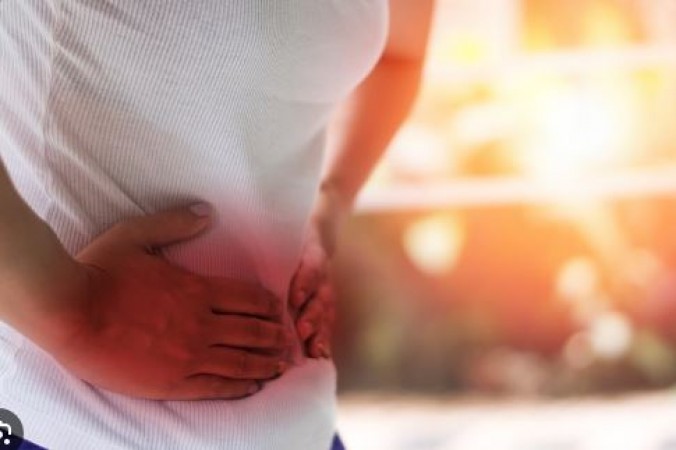
Experiencing stomach pain or muscle strain can be quite distressing. Often, these issues arise suddenly and can disrupt daily activities. While seeking medical advice is essential for persistent or severe pain, many times, simple home remedies can offer immediate relief. One such effective remedy is the use of heat and cold therapy, known as "sikai" in Hindi. This guide provides detailed insights into how you can use this technique to alleviate your discomfort.
Understanding Heat and Cold Therapy
Heat and cold therapy are two distinct methods of alleviating pain and discomfort. Each method has specific applications depending on the nature of the pain or strain:
Heat Therapy: This involves applying warmth to the affected area. Heat therapy helps relax and loosen tissues and stimulates blood flow to the area. It is particularly effective for chronic pain, muscle stiffness, and menstrual cramps.
Cold Therapy: This involves applying cold packs to reduce inflammation and numb the affected area. Cold therapy is generally used for acute injuries, muscle strains, and to reduce swelling.
Benefits of Heat and Cold Therapy
Heat Therapy
Reduces Muscle Stiffness: Applying heat helps in relaxing tight or stiff muscles, which can alleviate discomfort.
Improves Blood Flow: Heat therapy enhances blood circulation, which can promote faster healing of muscle strains and other soft tissue injuries.
Eases Abdominal Pain: For menstrual cramps and other types of abdominal pain, heat therapy can provide soothing relief.
Promotes Relaxation: The warmth from heat therapy can help in reducing overall stress and discomfort.
Cold Therapy
Decreases Inflammation: Cold packs can reduce swelling and inflammation, making it beneficial for acute injuries.
Numbs Pain: The cold temperature can numb the affected area, providing temporary pain relief.
Reduces Muscle Spasms: Cold therapy can help in decreasing muscle spasms and cramps.
How to Apply Heat and Cold Therapy
Heat Therapy Techniques
Heating Pad: A common and easy-to-use method. Place the heating pad on the affected area for 15-20 minutes. Ensure it's not too hot to avoid burns.
Hot Water Bottle: Fill a bottle with hot water and wrap it in a towel. Apply it to the painful area for relief.
Warm Compress: Soak a cloth or towel in warm water, wring out excess water, and apply it to the area. Repeat as needed.
Rice Bag: Fill a sock or cloth bag with uncooked rice, heat it in the microwave, and use it as a warm compress.
Cold Therapy Techniques
Ice Pack: Wrap an ice pack or a bag of frozen vegetables in a cloth to avoid direct contact with the skin. Apply it to the affected area for 15-20 minutes.
Cold Compress: Use a cloth soaked in cold water or an ice pack to reduce swelling and numb the pain.
Frozen Gel Pack: These are designed to stay cold for longer periods. Apply them wrapped in a towel to the area.
When to Use Heat or Cold Therapy
Muscle Strain: For recent strains or injuries, cold therapy is generally recommended to reduce swelling. For chronic muscle stiffness, heat therapy can be beneficial.
Stomach Pain: Heat therapy is often helpful for abdominal pain, including menstrual cramps. Apply a warm compress or heating pad to the lower abdomen.
General Pain and Discomfort: If unsure whether to use heat or cold, consider the nature of the pain. Use cold for acute injuries and heat for chronic or muscle-related pain.
Important Considerations
Avoid Prolonged Application: Limit the application of heat or cold to 15-20 minutes at a time to prevent skin damage.
Check Skin Condition: Ensure there are no open wounds or skin conditions before applying heat or cold therapy.
Monitor Temperature: Avoid using extremely hot or cold packs to prevent burns or frostbite.
Consult a Doctor: If you experience persistent or severe pain, consult a healthcare professional for appropriate diagnosis and treatment.
Heat and cold therapy are simple yet effective methods to manage pain and discomfort associated with stomach pain and muscle strain. By applying these techniques correctly, you can achieve significant relief and improve your overall well-being. Remember to follow the guidelines and seek medical advice if necessary.
Chandipura Virus Cases Climb to Four in Rajasthan, Health Authorities Ramp Up Testing and Vigilance"
First-Ever Aarogya Maitri Cube Para-Drop: IAF and Indian Army Join Forces
Rakhi 2024: Impress Your Sister With These Healthy Food Gifts for a Wellness Boost